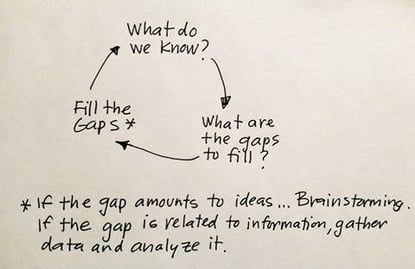We time nearly everything during Brainzooming strategy and innovation workshops, spelling out upfront how many minutes we'll have to accomplish a task and what types of output we expect to produce within that window.
Often, we use noisy kitchen timers for the actual timing. Invariably, participants hate the timer alarm going off early in the collaborations; by the end, they are saying that they need to start timing activities at their own meetings!
4 Reasons to Set Time Limits in Meetings

Here are four advantages that Brainzooming participants routinely experience when we set time limits on generating ideas and developing strategies:
1) It shows people that you value their time
Setting a time limit helps you get what you want done promptly, thus avoiding running late or coming up short relative to your session objectives.
2) There's a sense of urgency that everyone feels
A time constraint and an aggressive goal on the number of ideas identified creates healthy pressure to generate, and not debate, new ideas.
3) There's time to look at opportunities in multiple ways
It’s much more productive to divide 28 minutes into four different 7-minute exercises than a single effort. This allows varying the perspectives from which you’re addressing your challenge, yielding a stronger set of possibilities.
4) It forces analysis into the evaluation phase
When you only have a few minutes to generate ideas, it dissuades people from analyzing ideas as they are shared. That can wait for an evaluation phase. Even then, when we're discussing ideas to prioritize, timing the activity precludes endless, unproductive debate that won’t materially change the group’s outcomes.
How soon will you set time limits?
Setting aggressive time limits for collaborating is one of the most simple techniques to keep group meetings active, fun, and productive.




